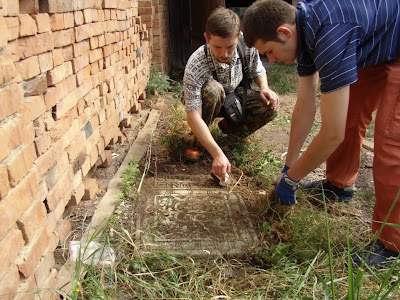Greece: International Outrage Expressed About Hania Synagogue Arson
(ISJM) As word has spread following the second attack on the Etz Hayyim Synagogue in Hania, Crete (Greece) a number of organizations and governments are expressing concern and outrage over the attack and solidarity with the small Hania Community and the family of supporters of the Etz Hayyim Synagogue and its cultural center.
Here are few such statements. In the USA, ISJM continues to collect contributions for the repairs and resotration of the syangogue, its office and library. One hundred percent of all fund recevied will be transferred to Hania. Checks can be sent to:
ISJM
118 Julian Place, Box 210
Syracuse, NY 13210
(write Hania in the memo line)
Statement from the United States Department of State
Mark C. Toner
Acting Deputy Department Spokesman
Washington, DC January 20, 2010
We strongly condemn the January 5 and January 16 arson attacks on the Etz-Hayyim Synagogue in the city of Chania on the island of Crete. The Synagogue dates back to the Middle Ages and is one of the last Jewish monuments on the island. An attack on the Etz-Hayyim Synagogue is an attack on Greece's history and heritage. The second attack caused severe damage to the Synagogue, destroying nearly 2,000 books and severely damaging the building's wooden roof.
This attack was clearly intended to intimidate and terrorize Greece's Jewish community and is only the latest of several incidents of anti-Semitic vandalism throughout Greece over the past few years. We applaud the Greek government for condemning these attacks and taking a strong stand against anti-Semitism and racism.
Our Embassy in Athens is in contact with the Synagogue. Embassy officials will be meeting with their Greek counterparts to underscore U.S. concern over this incident.
Statement of the American Hellenic Educational Progressive Association (AHEPA)
WASHINGTON – Nicholas A. Karacostas, supreme president of the American Hellenic Educational Progressive Association (AHEPA), a leading association for the nation’s three million American citizens of Greek heritage, and countless Philhellenes, issued the following statement regarding the continued anti-Semitic attacks upon the historic Etz-Hayyim Synagogue located in Hania, Crete:
“We strongly condemn the anti-Semitic attacks that have been carried out on the Etz-Hayyim Synagogue in Hania. This is the second arson attack in two weeks that has left the synagogue’s infrastructure devastated and approximately 2,500 rare books and other archival items destroyed by fire.
“These anti-Semitic attacks upon the Jewish community in Greece are simply unacceptable. We appeal to the people of Hania, and all Greek citizens, to come together to defy these acts of hatred, intolerance, and bigotry; and to help the healing process begin.
“We call for the swift apprehension of the perpetrators of these heinous attacks so that they may be brought to justice.”
AHEPA is the largest Greek-American association in the world with chapters in the United States, Canada, Greece, Cyprus, and sister chapters in Australia and New Zealand. It was established in 1922 by visionary Greek Americans to protect Hellenes from prejudice originating from the KKK, and in its history, AHEPA joined with the NAACP and B’nai B’rith International to fight discrimination.
The mission of the AHEPA family is to promote the ancient Greek ideals of education, philanthropy, civic responsibility and family and individual excellence through community service and volunteerism.
Statement from the American Jewish Committee
January 17, 2009 -- New York -- AJC is outraged by this morning’s arson attack that severely damaged Etz Hayim, the only synagogue on the Greek island of Crete. It was the second arson attack on the historic building in ten days.
“Our hearts go out to the Greek Jewish community,” said AJC Executive Director David Harris. “To target such a house of worship not once, but twice, within days of each other requires a swift public response from all in Greece who believe in the principles of religious freedom and mutual respect.”
Today’s blaze severely damaged or destroyed Jewish ritual objects and religious books, as well as the synagogue’s roof. The earlier arson attack, on January 5, destroyed the synagogue’s library.
Nearly 90 percent of Greek Jewry was murdered by the Nazis in World War II. Greece’s Jewish population today is only 5,000. After the Nazis destroyed the Crete Jewish community in 1944, Etz Hayyim stood empty and neglected for decades. A restoration project commenced in 1996, and the synagogue was rededicated in 1999.
“We count on Greek Prime Minister Papandreou and his government to do everything possible to apprehend the arsonists and prosecute them to the fullest extent of the law,” said Harris. “The protection of all Jewish institutions in Greece must become a still higher priority in light of recent events. That attackers could strike the same target twice in ten days reveals the shortcomings of the security in place.”
AJC and the Greek Jewish community have had an association agreement for many years.
 Luban, Belarus. Surviving synagogue building.
Luban, Belarus. Surviving synagogue building.

























